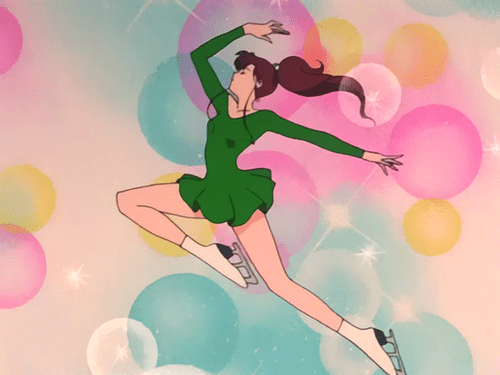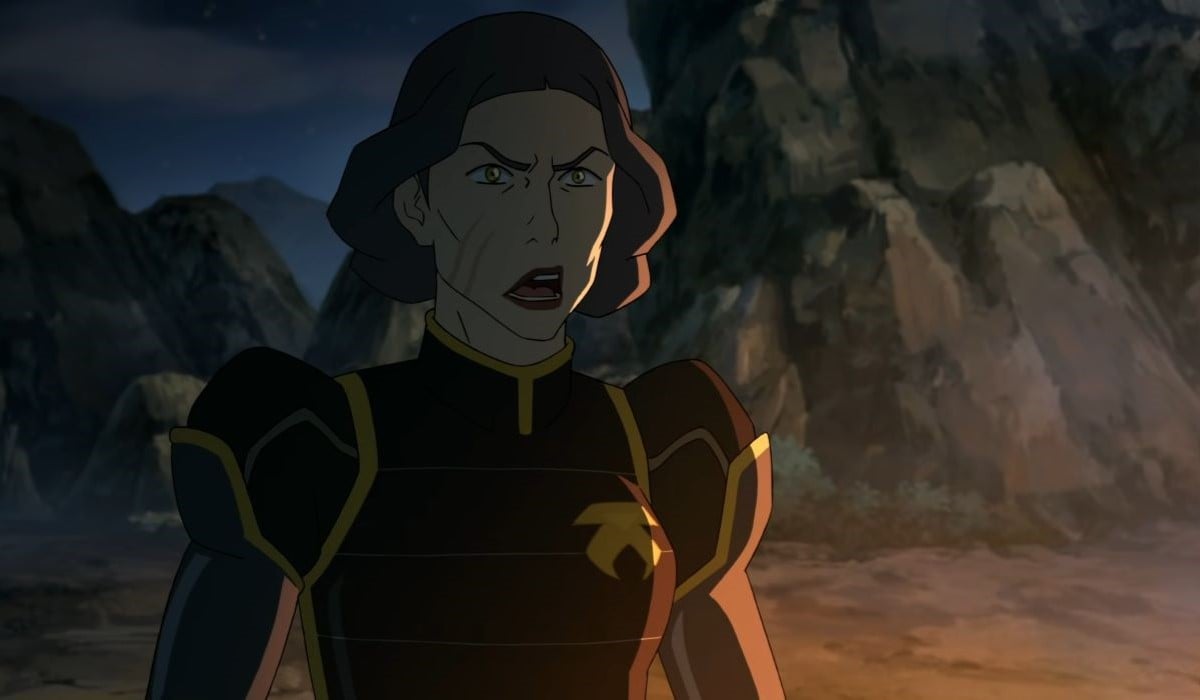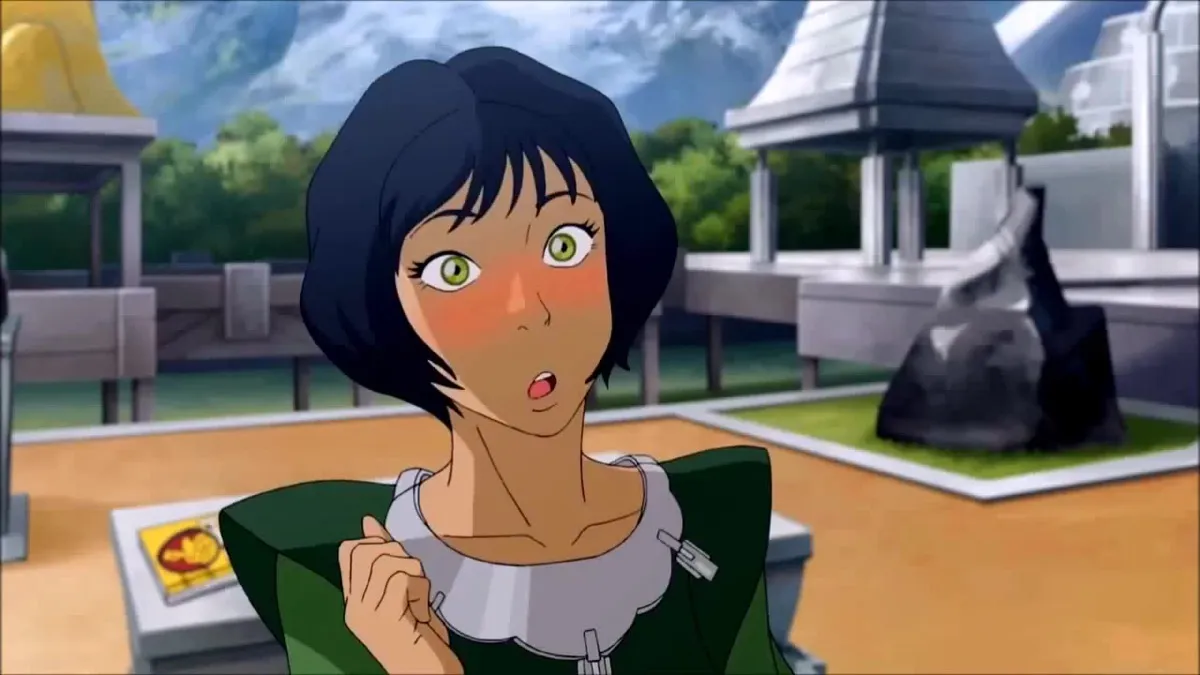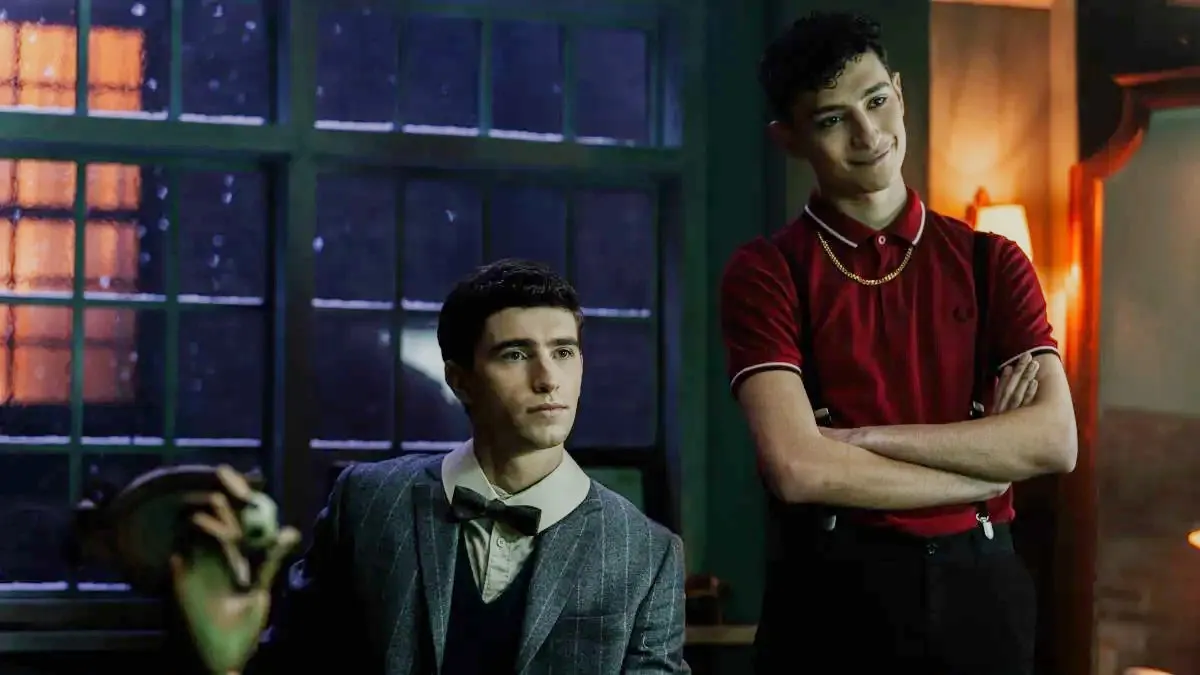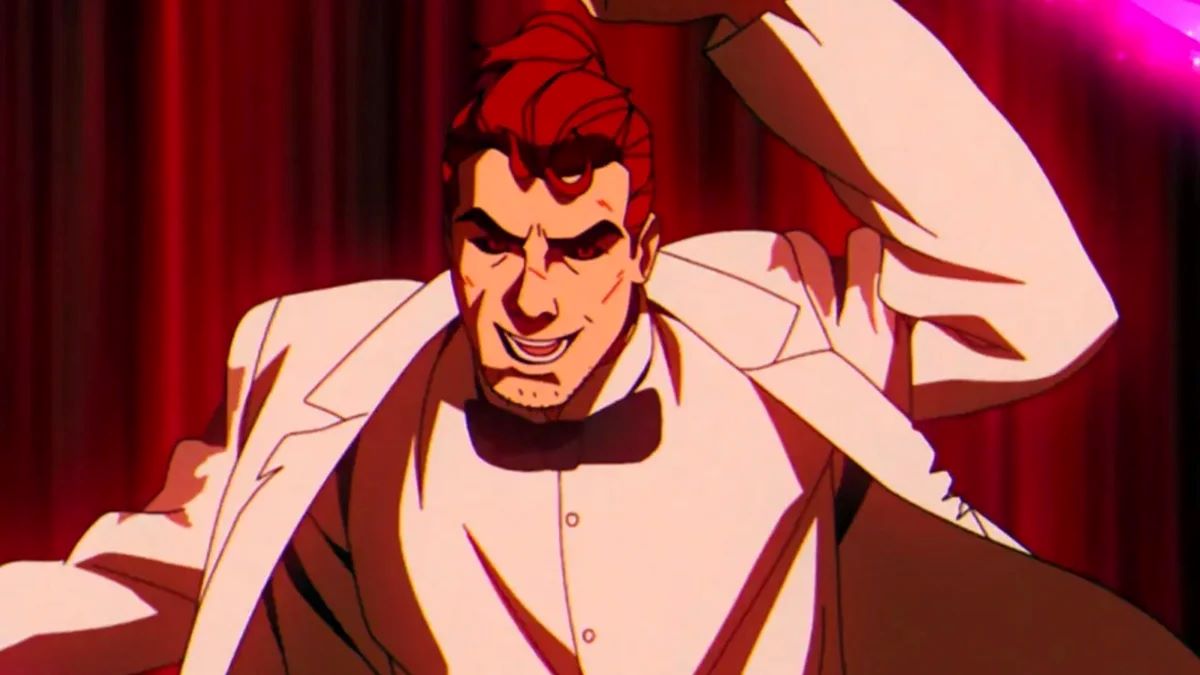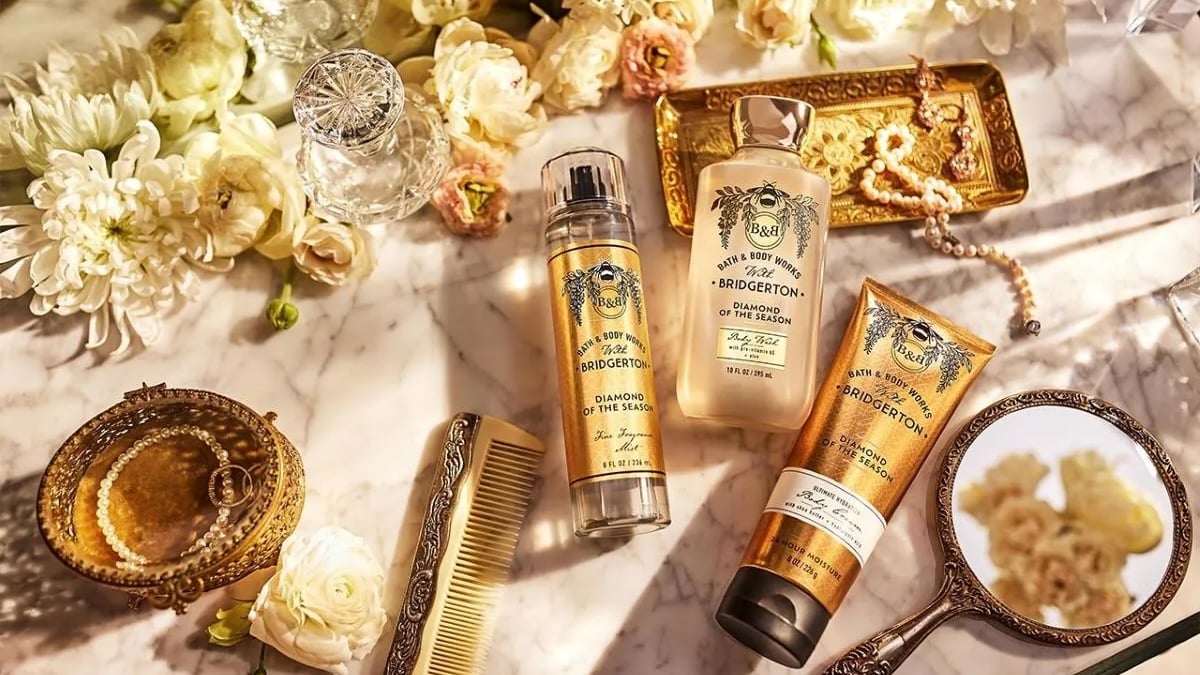The following was originally posted on Amanda Celine Miller’s personal blog in July 2014 under the title “How Sailor Jupiter Made Me Who I Am Today,” and has been republished with permission.
I need to take a second to explain why this woman means so much to me.
Forgive me, I’m usually kind of a goofball, but I’m going to get on my cheesy sentimental podium for a second, because I wanted to share with you one of my favorite Sailor Moon moments (from a filler episode no less) and why it affected me so much as a child.
I will always remember the first time I saw this episode. I watched Makoto (Sailor Jupiter) figure skating so beautifully and gracefully; she looked like an ethereal princess gliding around the rink. A handsome male figure skater comes up and joins her. She swoons instantly, and it’s all adorable and romantic (aside from the fact that he’s, you know, a demon who’s targeting her for the Dark Kingdom, but that’s not a total deal-breaker, right?). But for a moment, it gets awkward. Her skating partner can’t lift her because she’s athletic, muscle-bound, and not exactly dainty, so instead, without batting an eye, she lifts him over her head.
The look on her face wasn’t apologetic. She genuinely was having a blast and didn’t care that taking the traditionally masculine power position might make her seem less attractive to him or that she needed to hide her strength so as not to emasculate him.
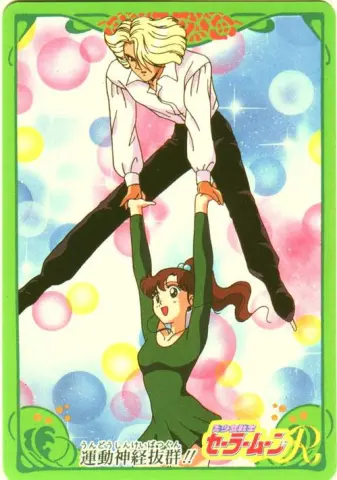
To Makoto, lifting him was just as viable a solution as him lifting her.
I always was drawn to Makoto for her interesting juxtaposition of the masculine and feminine. Her version of womanhood was complex, well-rounded, and unique to anything else I had seen in kids shows before. She was at the same time strong and sweet, badass and gentle. On the one hand, a tough self-sufficient independent woman who had lived on her own for years and answered to no one. On the other, a hopeless romantic who liked crushing on cute boys and secretly dreamed of becoming a beautiful bride someday.
I also remember the episode where she gets a lady crush on Haruka because she deeply admires how Haruka is confidently able to reconcile the masculine and the feminine parts of herself, and doesn’t apologize for how anyone else receives her. Someone else’s confusion or inability to put her in a box is their problem, not hers.
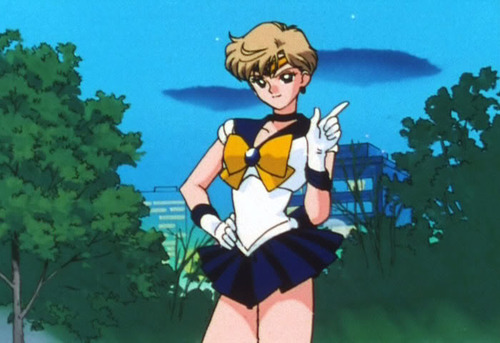
“Oh, snap.”
Makoto even admits to Usagi that one of the reasons she learned how to cook was that she felt the need to balance her tomboyishness and her tall, muscular stature with more traditionally girly traits so that it would maybe soften her up and people wouldn’t be as intimidated or afraid of her.
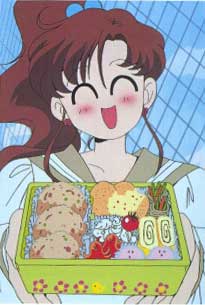
(Pictured: Terror incarnate)
I may not be able to lift a grown man over my head (YET), but as a tomboy who played soccer and hockey, and was the tallest girl in my elementary and middle school class, hers is struggle I identify so deeply with, and is something I always have and still do wrestle with. Judging by the responses I got from a lot of girls after the AX Sailor Moon Q&A panel where I mentioned that very thing, it would seem that apparently I’m far from alone in that struggle.
And this applies for guys, too. I think both genders often feel ridiculous amounts pressure to align their interests and personality with what’s traditionally more socially acceptable for their biological sex. Men have to worry that they’re being too “effeminate” and if they show too much emotion or sensitivity, they’ll “lose their man card”. Women are told to avoid being assertive or opinionated so as not to appear “bossy” or “bitchy”.
And God forbid you be your full-blown, unbridled, unfiltered, strong, smart, sassy self around a guy that you’re interested in. The common sentiment seems to be that if you’re not a demure, coy, shrinking violet, somehow men can’t possibly find you attractive. (…Although the fact that Makoto had a notoriously terrible time finding love didn’t do much to assuage my worry that boys would be turned off by my personality. But then again, she was a teenager which is just an all-around awkward time for everyone in the romance department. If they did a Sailor Moon epilogue to show them in their 20s or 30s, I’d be curious to see if Makoto finally got her wish of getting married….annnnd I’m seriously postulating about the long-term romantic prospects of a fictional character. Wowza).
That’s why what Naoko Takeuchi created was so brilliant and progressive in my eyes. The ’90s was an awesome time to be a cartoon-loving kid, and I LOVED me some action adventure shows, so at some point I had come to accept that if I wanted to watch shows in that genre, there were usually ever going to be only one or two token female leads (or often none at all). But Sailor Moon was the first time I had seen a superhero team kicking ass and taking names that was comprised of *gasp* girls. My friends and I each identified with and saw ourselves in the different Sailor Guardians (mine was obviously Makoto, so getting to voice her now as an adult is still such a surreal experience).
You see, when you have an entire team of girls instead of just one or two, it makes the writer’s job easier because they don’t have to be as worried about playing it safe with their sole precious female character, and can therefore be more nuanced and complicated in their approach. You can give them each distinct personalities, flaws, strengths, desires, POVs, etc, because you have more than just one person representing an entire gender. With proper representation, you have the freedom to just show people as human. The good, the bad, the ugly, the quirky, so on and so forth. This goes for any underrepresented group of people.
When I started watching this show, I was young, insecure, and impressionable. I was still trying to find myself and figure out what categories I fit into. Seeing Makoto’s journey showed me that it’s okay to not fit neatly into any box, and that girls can be superheroes, too. You can save the world and vanquish evil and do it while wearing a skirt, cute accessories, and fabulous boots, if you want. You don’t have to sacrifice an ounce of your strength in order to maintain your femininity, and vice versa.
Amanda Celine Miller in “Jupiter, The Powerful Girl In Love”
Having that inner conflict represented on screen helped me so much growing up, because it showed me that I wasn’t alone. It inspired me to believe that being strong, courageous, and athletic, and being vulnerable, soft, and, feminine are not mutually exclusive.
On days when I question myself and really really need to be reminded of all these things, I stop, and think:
“Hey. Remember, Jupiter was a princess and a soldier. Don’t make apologies for who you are just because some people’s tiny brains can’t process the fact that you are a fiercely powerful princess, a gentle warrior, a giggling boy-crazy tomboy, a decidedly “unladylike” lady, and undeniably 100% woman.”
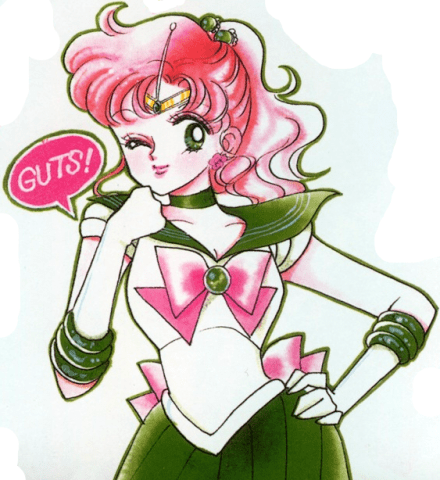
So…thanks, Mako-chan.
Amanda Celine Miller is a voice actor in Fire Emblem Awakening, Dangan Rompa, Marvel Heroes (as Kate Bishop!), and many other video games and English anime dubs. She plays Makoto Kino, AKA Sailor Jupiter, in Viz Media’s Sailor Moon dub, the second volume of which comes out today on DVD and Blu-Ray. You can also follow her on Twitter (@Amanda_Celine), Tumblr, Youtube, and Instagram.
Are you following The Mary Sue on Twitter, Facebook, Tumblr, Pinterest, & Google +?



